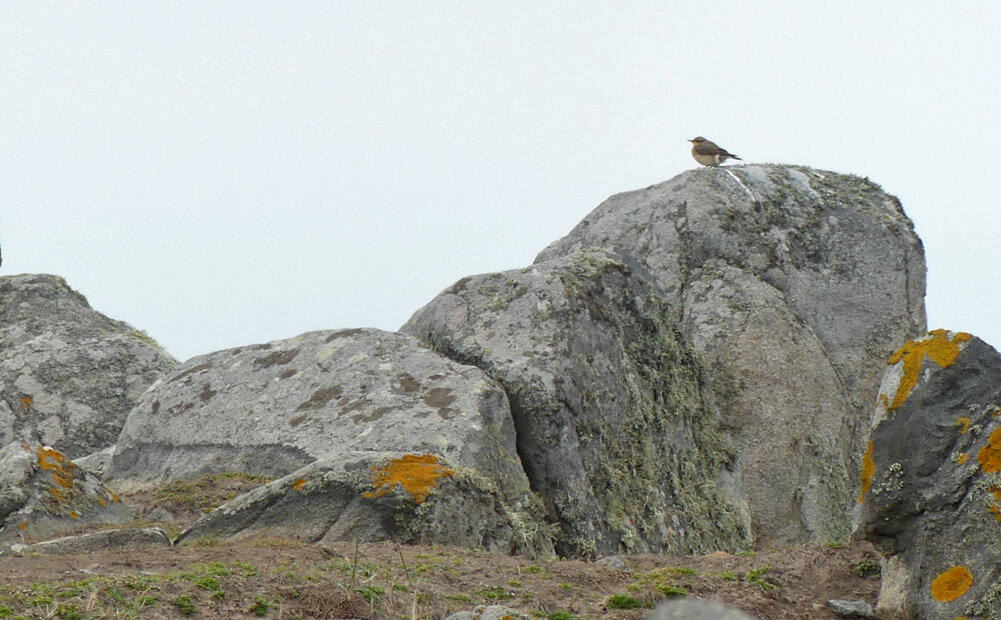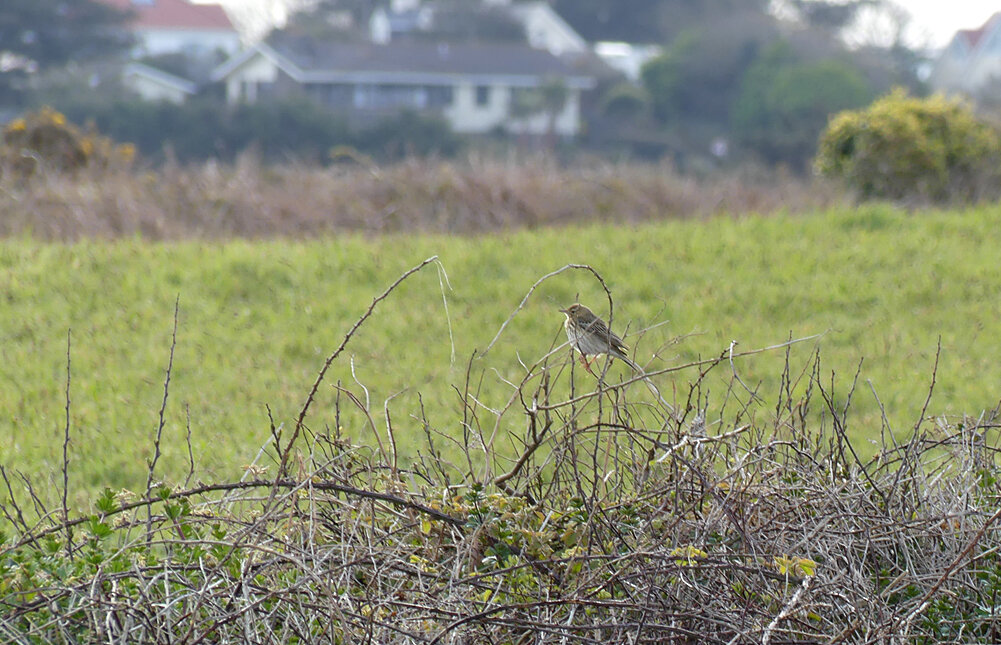April 2021 pt i
/My first Wheatear of 2021 was not until the late date of 24th March, which was to become a bit of a theme of the spring. An unwritten rule of birding is always take a photo of the first Wheatear, so here it is at Pulias.
Wheatear - Pulias, 24 Mar 21
The rest of March produced the odd new migrant with a few White Wagtails, Sand Martins and a Water Rail at Pulias, and a couple of Willow Warblers on 30th. One of the Mute Swans was at Barras Lane on that date and a Purple Sandpiper was on the usual rock at Rousse on 28th. Technically, the rarest patch bird was my second record of Coot, with a pair on Port Soif Nature Trail pond, but since I rarely visit this corner of my area, they no doubt are more regular than that. They appeared to be nest-building so perhaps they will breed this year, which they haven’t done since I have been visiting the pond as far as my records show.
Coot - Port Soif NT, 31 Mar 21
The start of April and the start of the Easter holidays which would be fully spent in Guernsey this year due to virusy reasons. I intended to get out as much as possible to catch some migration but the weather patterns would not be too helpful for this. On 3rd I tried a few south coast spots but the best bird was a Long-eared Owl I flushed from Prevote Valley - probably not dense enough trees for breeding there. I tried to find the Jackdaw nesting site at Creux Mahie but all I could get was an approximate spot without falling in the sea. Sightings on 5th included the 3 Canada Geese still knocking around and a group of 5 Razorbills off Fort Doyle, but apart from Willow Warblers very few migrants were in.
The 9th April looked a little more promising weather-wise so I went up Pleinmont. Tree Pipits were passing through and I recorded at least 6 birds, mainly overhead but one was down in a hedge. A Sedge Warbler and Yellow Wagtail were my first of the year, and two Great Northern Divers were feeding distantly near the Hanois. Bird of the morning was a Short-eared Owl which flew across the headland - quite a dark bird, and I wasn’t sure whether it could be a LEO or not until we looked at Mark G’s quick snaps. There were also a few Harbour Porpoises surfacing regularly out to see.
Wheatear - Pleinmont, 9 Apr 21
Tree Pipit - Pleinmont, 9 Apr 21
On 10th April the grapevine buzzed to say that a Black-winged Stilt had appeared at Vale Pond just up the road. As it was so close and I had a small window of time, I went to have a brief look, but it wasn’t showing very well, feeding behind the reeds. The photo below was taken by holding the camera over the wall vertically above my head. This was, I think, my 6th sighting in Guernsey.
Black-winged Stilt - Vale Pond, 10 Apr 21
14th April and I went with Mark and Wayne to Herm for a day of spring birding. The weather was sunny and we hoped for something rare from warmer climes. Headed straight for the common which was quite quiet. Off the northern beaches there were up to 30 Brent Geese still plus a Bar-tailed Godwit with a few Whimbrel. There were plenty of common migrants on the island with Blackcaps, Chiffchaffs, Willow Warblers and Wheatears totalling at least 75 individuals. The only scarce passerines we saw were both a female Common Redstart and a male Black Redstart within sight of each other in the southernmost fields. The sun brought many raptors and Ravens into the air and these were constantly circling. Viewing from the southern cliffs we could see a few auks below - at least 2 Razorbills and 4 Puffins. A cracking day out as usual on Herm but no cream topping today.
On 17th April I did an afternoon tour of most of the wetland areas between Grand Pre and Claire Mare. My first Reed Warblers sang in various beds and Cetti’s Warblers were singing at every site visited, including the ditches on Grande Mare golf course which they seem to have invaded during the last year or so. Yellow Wagtails included groups of 7 at the golf course and 8 along the Shingle Bank. A single Little Ringed Plover was feeding in front of the hide at Claire Mare. The most unusual bird for the time of year was a single Mistle Thrush in the field behind Vale Pond (not found by me).
LRP - Claire Mare, 17 Apr 21
The other interesting bird was a Ruddy Shelduck on CBNR on 18th. Three had been discovered a few days before and I finally saw one of them. The species’ status is constantly a matter of debate in the UK but since it doesn’t sit on category A of the British list at the moment, it is unlikely that it will be added to ours soon. The possibilities of a truly wild bird are slim as they have declined so much in eastern Europe and N Africa, and are quite common in captivity. Some people suggest that they come from a European feral population like with Egyptian Goose but the situation is far too complex to get into here. There are always Ruddy Shelducks at large in the UK somewhere or other, and I have seen a few over the years. I remember a small group at Chew Valley Lake in the early 90’s which some birders suggested were ‘wild’. It’s the kind of species that, whilst being terrific, is just too complicated to think about.
Ruddy Shelduck - CBNR, 18 Apr 21
Little Egret - Claire Mare, 17 Apr 21
Little Egret - Claire Mare, 17 Apr 21
Common Mourning Bee - Fontanelles Bay, 13 Apr 21 - a new species for me and i didn’t realise until I studied these photos. They were there because they parasite the species below which were also present in decent numbers.
Hairy-Footed Flower Bee - Fontanelles Bay, 13 Apr 21
Ground-ivy - Herm - 14 Apr 21 - a species which I have rarely seen locally, there was a large patch on Herm.













